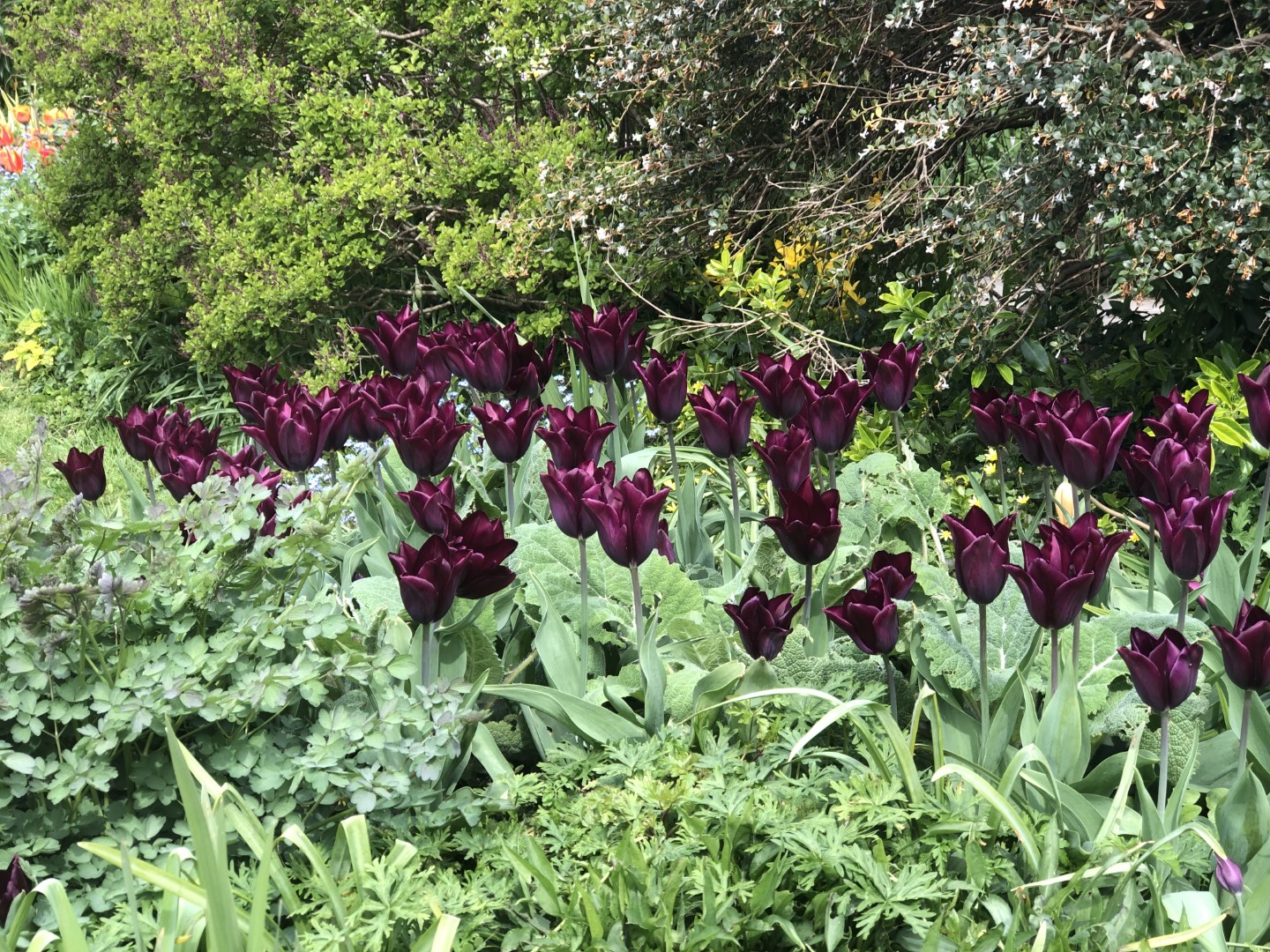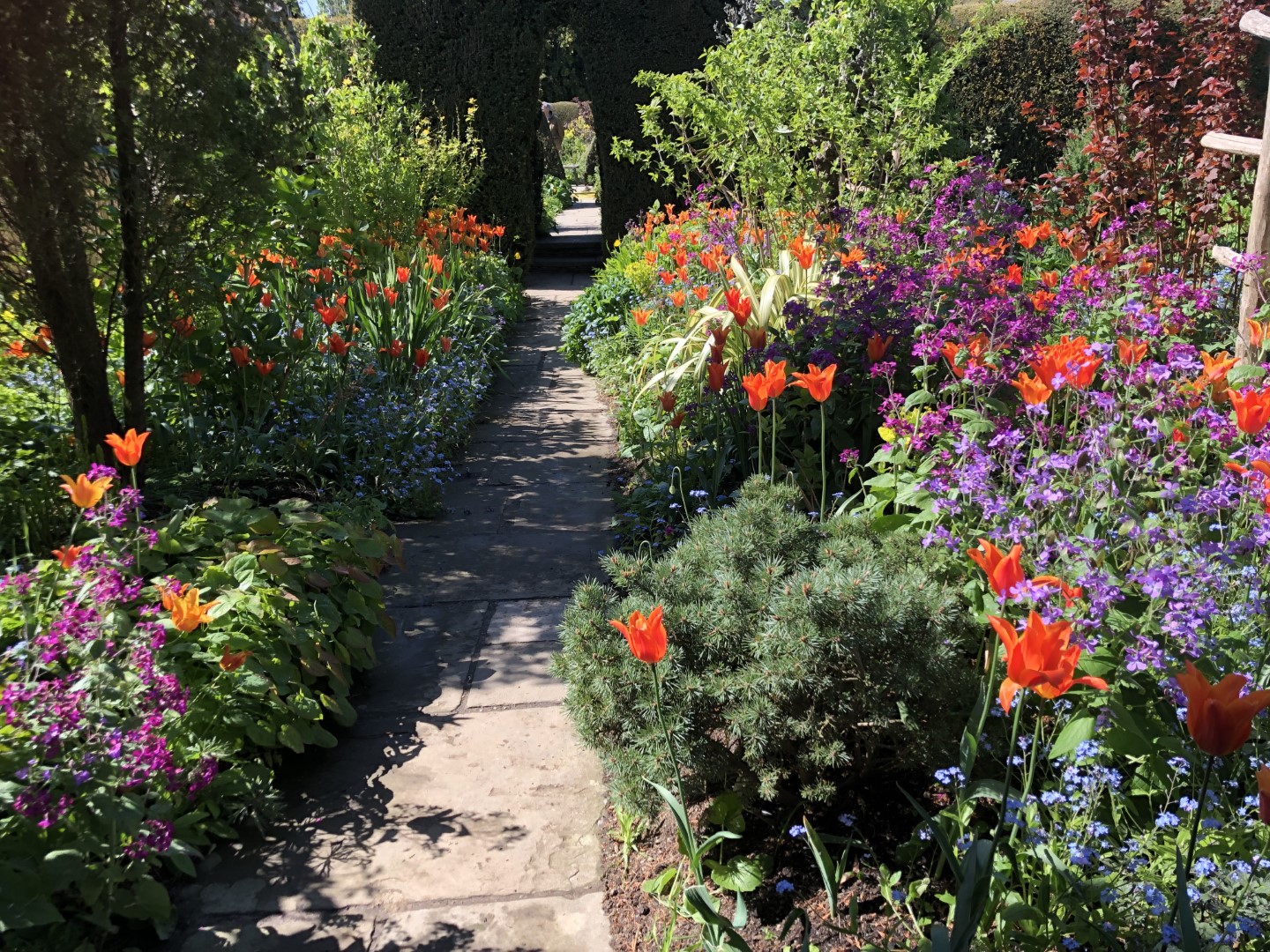Jo Arnell applies cooking principles to the garden this month, as she starts planning her bulb lasanges

I’m doing my best squirrel impression this month, scuttling around, digging holes and burying bulbs in the hope that, come the spring, welcome splashes of colour will pop up in my beds and borders. A lot can happen in the garden in the intervening months – not least the actual squirrels following in my footsteps, unearthing and skipping off with my buried treasures. At the moment I’m full of hope – in fact, anticipation and hope – imagining how lovely it’s all going to be is a big part of the process.
Autumn is the main bulb planting season, but there are bulbs for other times of the year too, planted in the spring and early summer. This is something that is often overlooked, and potentially it can be confusing trying to work out what and when to plant.
It helps to know a little about what a bulb is and where in the world it may have come from. A bulb is a modified version of the plant; leaves, stem and basal plate (from which the roots will sprout), compressed into a package, primed to grow when conditions are right.
They tend to get lumped in together, regardless of origin, but often need different growing conditions in order to thrive. There are bulbs from woodland situations that flower in early spring and retreat back under the soil once the canopy of leaves appears. Woodland bulbs will tolerate shade and slightly damper conditions, but those that come from more arid climates will prefer a sunny and very free draining position. They don’t mind the cold necessarily – bulbs from mountainous regions will manage very low temperatures, but may also need a summer baking and good drainage through the winter – but wet, soggy soil may cause them to rot or be more vulnerable to fungal infections. Snake’s head fritillaries, on the other hand, thrive in damp meadows and won’t readily reappear in dry conditions. If you know their origins, you will get clues about the conditions they’ve evolved to live happily in.
Bulbs in containers
Bulbs work well in containers, either mixed with spring bedding plants, or on their own. The great thing about growing in containers is that, once the flowers are finished, you can move them to do their tatty dying back out of sight behind the shed. I sometimes put a plastic pot inside a nice one, so that it can be removed, leaving the pot free for summer bedding.
Cook up a pot full of bulb lasagne by layering bulbs that flower at different times. Three tiers works well, and it’s worth choosing different types – some short, some tall – and not too many tulips, as they’re quite leafy and planting too many will fill the pot with foliage.
Bulbs that bulk up and naturalise well
Wild plants like bluebells and garlic rampantly cover the ground so are best left to run wild outside in woodland and hedgerows rather than in the garden. Snowdrops, crocuses and narcissi are well known for spreading themselves around too, although slightly less enthusiastically. They also seem to enjoy the edge of woodland and damper meadow situations. Anemone blanda will carpet the ground in shades of blue, white and pink – watch how after flowering the seed-heads bend down to the ground and bury themselves (cyclamen do this too).
For a natural looking effect, scatter the bulbs where you want them to flower and then plant them where they fall; this avoids unnatural looking groups and rows. They will soon clump up and spread around by themselves. Beware of the grape hyacinth (Muscari) though, which can become a weed once it gets going in the garden. The flowers are attractive but the foliage – that tends to linger for way too long – is just like grass and sprouts up all over the place.
Snowdrops will colonise and naturalise more easily when planted ‘in the green’. This means planting them once flowering is over, but before they dry out. Bought and planted as bulbs in the autumn they may have already dried out too much
If growing Narcissi in lawns, make sure you don’t mind waiting six weeks before cutting the grass. I tend to only grow smaller types like ‘Tête-À-Tête’ or ‘Thalia’ in borders, as the huge ‘King Alfred’ style daffodils have lots of foliage that flops about looking unsightly once the flower is over.
Many tulips can’t be trusted to come back reliably each year. As a general rule, the closer you are to the species, the more perennial they are and these seem to be less prone to viruses too. The worst disease affecting tulips is Tulip Fire, which is a fungal infection that spreads easily (like fire?) among the bulbs. This is the reason it’s advisable to plant your tulips late – as late as January has been known without any ill effects.
That way the cold weather should kill off any spores before the bulbs go in.
Planting companions
Your bulbs will look attractive among other early spring flowering plants. Biennials are especially effective, because they flower at the same time and also tend to be quite frilly and floriferous – plants like forget-me-nots, bellis and wallflowers make good ‘skirts’ for the bulbs and then, as their foliage starts to die back and become unsightly, the froth of foliage and flowers will cover it. Dying foliage out in the borders can also be hidden (bulb leaves never die off prettily) with other low spreading plants, like geraniums, astrantias and Alchemilla mollis, which will also grow up and cover the leaves.
After flowering
Once flowering is over, dead-head to stop them wasting energy making seed and try to let the leaves die back naturally – tying them in knots is not the solution. Some people give them a feed at this point, but a sprinkle of general purpose fertiliser over the ground is welcomed at any point in the spring. They should start to multiply over the years if they like the conditions. Many bulbs bulk up and spread quite readily, especially those recommended for naturalising, whereas others seem to diminish, depending on the variety. Tulips, especially the really pretty parrot cultivars and those with frilled or striped petals are rather fickle and won’t always appear in future years – the bulbs tend to split into ‘bulblets’ which take a few years to gain enough energy to flower.
Potential problems
Bulbs will always perform when first bought, because they are sold in peak condition, with everything they need, packaged up and ready to grow, but after that it’s up to the prevailing conditions and the care they receive to ensure that they keep on flowering.
Bulbs can become ‘blind’, which means that leaves grow, but no flowers appear. It’s a sign that they’ve run out of energy, usually because they’re congested. If this happens, lift and separate them, replant and feed with some bonemeal, or a specialised bulb feed.
Tulips do not like being left in damp soil all year. If you lift them (and have the time and inclination) be sure to store them somewhere dry and away from pests until it’s time to plant them again.
Buy good sized, nice quality bulbs – and aim to plant them as soon as you can after they arrive. If they are left in their packs for too long they’ll succumb to infections. Tulips should really be planted in November once conditions are cooler and the viruses in the soil have become less active.
Try to plant bulbs – especially those in borders – really deep. This improves flowering and may prevent you slicing through them later in the year, once you’ve forgotten where you planted them!
To book a gardening course, contact Jo on 07923 969634 or see hornbrookmanor.co.uk
You may also like
In the Night Garden
Jo Arnell explains how to make the most of your outdoor space once darkness falls Some enchanted evening you may see me outside – mainly searching for slugs in the garden, because the cool hours of night are when they...
Contain your excitement
Jen Stuart-Smith discusses how to get creative with your pots and planters My love affair with plants started with houseplants when I was a child. As my bedroom windowsill overflowed – resulting, occasionally, in waking up with compost under my...
More than just a pretty face
Jen Stuart-Smith explores the multiple uses of some easy-to-grow garden favourites When you grow flowers for their beauty, shape and colour it can be easy to forget all the other qualities they have to offer. Some are edible, others provide...










